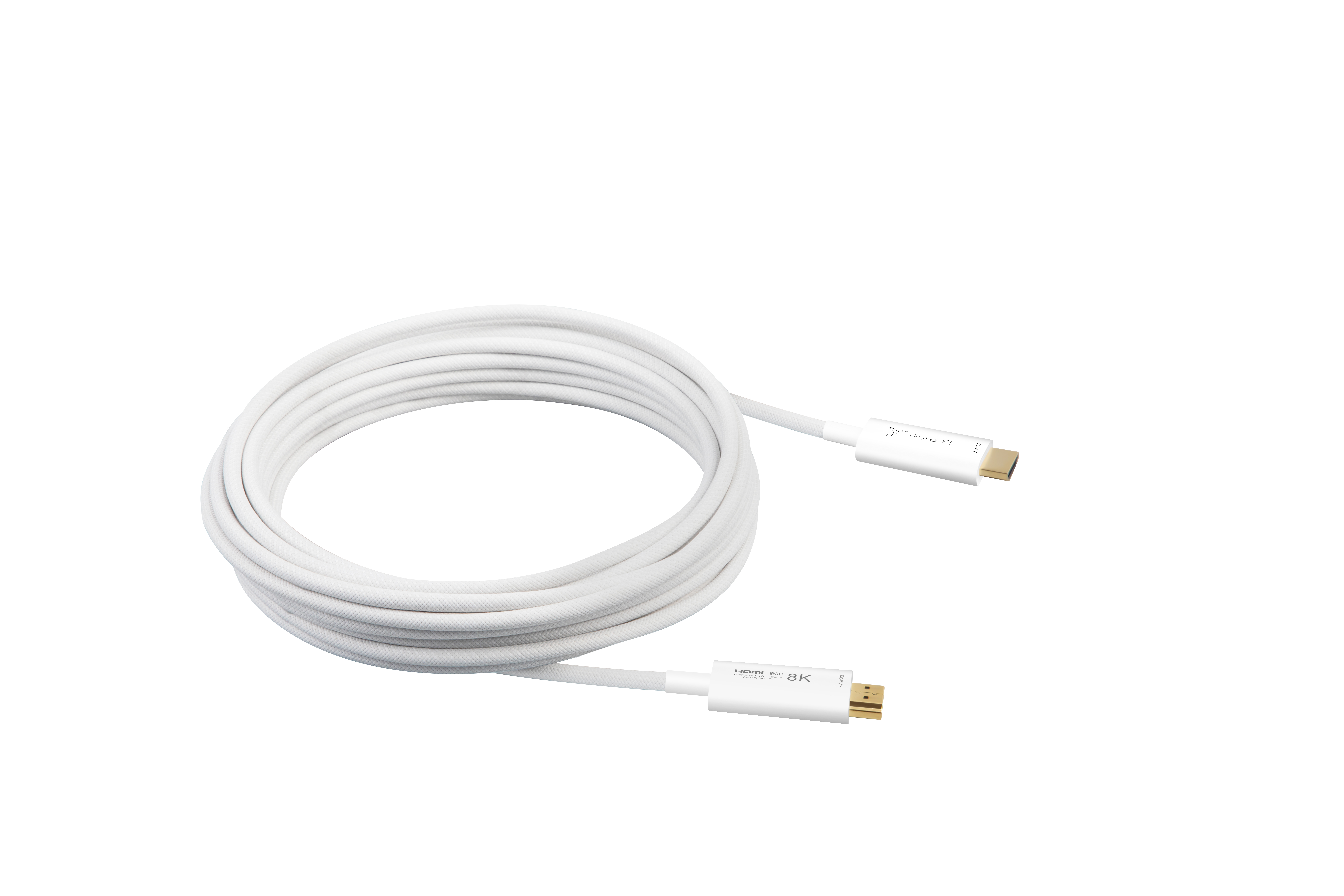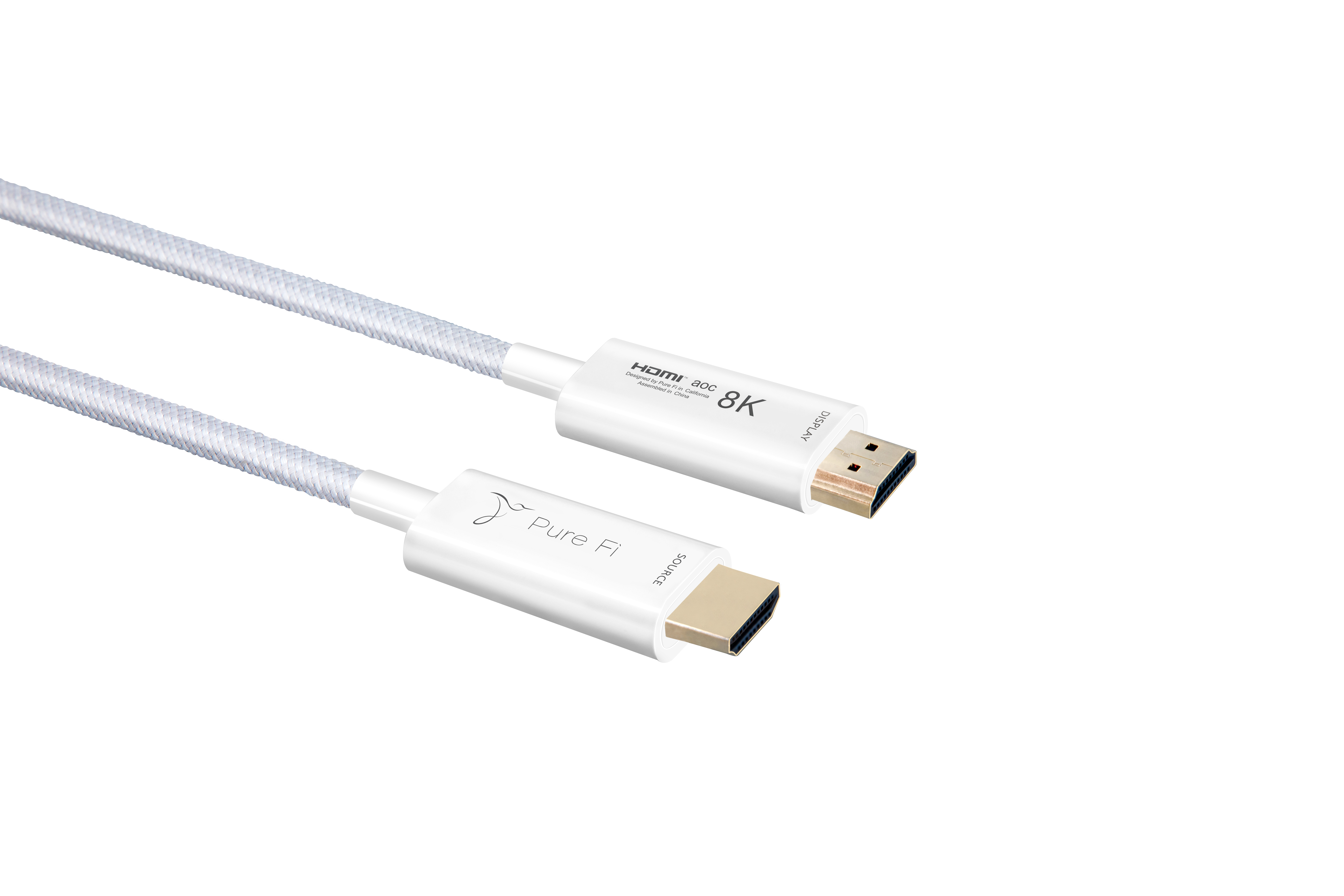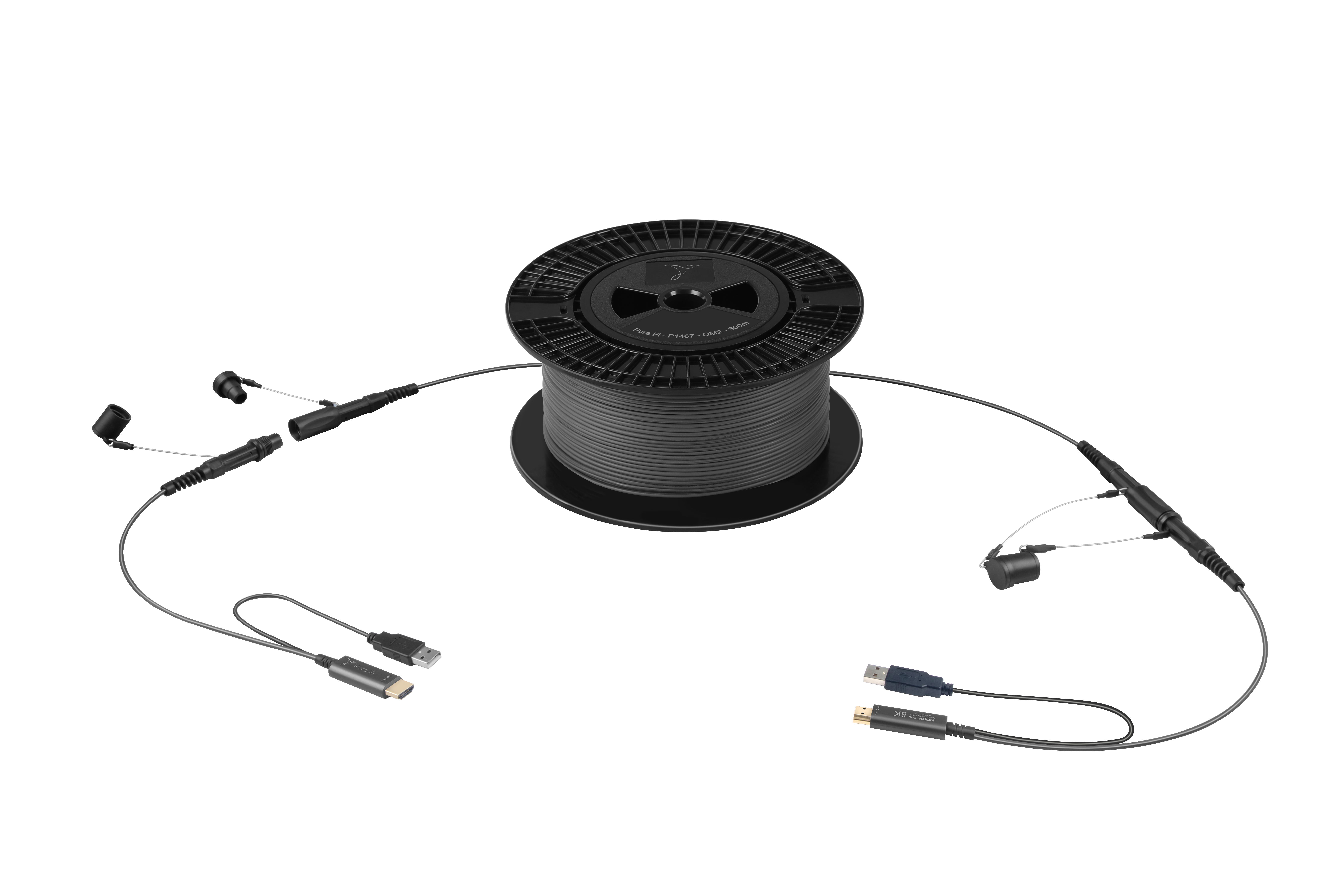Display Technology
Pure Fi's aim to disrupt AV with HDMI 2.1 8K optical cable
Bill Huang launched Pure Fi with aims to disrupt AV by bringing HDMI 2.1 optical cabling to the masses. He sat down with Digital Signage Today to discuss the business model, the tech, and why the current state of technology made this the perfect moment to step up as a disruptor and democratize AV.

November 29, 2022 by Daniel Brown — Editor, Networld Media Group
 |
Bill Huang, provided. |
As reported by Digital Signage Today, Pure Fi has debuted a 8K HDMI optical cable, aiming to disrupt AV across verticals. CEO Bill Huang sat down with DST to discuss the innovation in depth.
Huang comes from a silicon and semiconductor background, mostly in the AV space, including working as an engineer at Silicon Image, the firm where HDMI was invented and where Huang also was one of the testers of the first HDMI device in the world. Huang launched Pure Fi in Santa Clara, California with the aim of revolutionizing and disrupting AV cabling.
The AV world has evolved rapidly, and 8K has pushed the growth of high-resolution since its introduction three to four years ago. Because of latency and bandwidth issues, this has posed a challenge. The problem is that traditional copper cables are bulky and expensive (especially at a distance), and signal degrades over long distances on traditional copper cable networks, entailing expensive transmitters and cumbersome networking administration. Also, as bandwidth requirements have grown, copper cables have become heavier and bulkier, and the material has been pushed towards its innate limits.
Pivoting to fiber optics
 |
Example of a hybrid cable, which ranges from 15-50 ft. Provided by Pure Fi. |
"I always boil it down to these three factors that will affect it," Huang said. "Bandwidth, distance and cost." While some solutions attempt to incorporate thicker cables, gold plating, alternate compression algorithms and so forth, Huang's team found a different approach with fiber optics, whose prices have finally come down enough to make it suitable for AV use. While more common in infrastructure, Huang hopes that Pure Fi will bring optical into the mainstream for AV and digital signage. The team offers hybrid cables (which mix copper and fiber optics) along with pure fiber optic cables (capable of longer transmission distances.)
"We are now solving not only the bandwidth problem, but the distance becomes a lot easier because there is no impedance, there's no degradation when the distance starts going longer and longer," Huang explained. This contrasts with copper cables, which must be made bigger and heavier the longer they are to keep signal integrity. "But (with) optical, theoretically you can go to infinity without losing the signal integrity."
Huang believes the cable will impact the industry across verticals. "When there's an 8K display that needs to be put up somewhere in a shop or even a stadium, you need to have a control box close to your control room or network room," Huang said. "You need that long cable to make it happen. You can say, 'I can go wireless…' (but) then you're talking about packetized video, you have to add latency to it." This often forces integrators to use onerous (and pricey) daisy-chaining of repeaters and amplifiers which requires power outlets for the additional equipment. By contrast, the optical HDMI cable allows up to 8K transmission without the extra headaches, up to nearly 300 meters per cable. Also, a modular approach makes swapping out cables easy since there are only two endpoints that plug directly into target devices.
Also, copper cables can often emit interference (especially if not well-shielded). Multiple shielding layers add weight and reduce flexibility in traditional copper and poor shielding. This can cause signal problems that users often attribute wrongly to their devices. In optical cabling, there is no such interference. "So yes, there is no copper whatsoever in there," Huang said, which eliminates electromagnetic interference or EMI. This makes the cable perfect for applications in sensitive settings, including industrial, automotive, medical and aerospace use cases.
Vertical integration
 |
Hybrid cable close-up. Provided by Pure Fi. |
The company also designs, manufactures and engineers the product end-to-end. With headquarters in California, Pure Fi's manufacturing arm, based in China, handles sourcing logistics from suppliers, including foundries like TSMC. This fuels quality control and agility.
In an HDMI cable, there are active components, Huang explained, including chipsets, laser drivers and detectors. Pure Fi vertically integrates all components, which is rare in an industry dominated by large firms with disparate component suppliers. "At an average cable company, they probably source their PCB, their little system module inside the cable, from some vendor, and that vendor has to source the IC from another vendor," Huang said. "So, there are a couple of layers there."
By contrast, keeping all components in-house eliminates inefficiencies and compatibility issues that can arise otherwise, and allows quality assurance across the board, down to the chip and board level.
The company's facility includes a comprehensive test lab. "I take compatibility very seriously," Huang said, and the lab doesn't simply test cables; it also procures and tests compatibility with a range of consumer devices, both old and new. Not only is every cable tested, but the company is also one of about 1,700 adopters with the HDMI licensing body.
While it's hard to estimate, Huang suspects that a secondary benefit of using such rigorously tested technology should eventually have ripple effects by reducing troubleshooting related to faulty or incompatible cables, a boon not only to consumers but to countless device vendors.
Are we reaching the upper limits of transmission in terms of raw physics in cables?
"That is the ultimate question," Huang said. Though wireless was introduced within the last couple of decades and is still having its fundamental capacity and limits tested, wired connectivity goes back a couple of centuries and is more mature. Still, when people say wireless is innately better, Huang likes to turn to a favorite analogy from automobiles. Despite all the high-tech advances, including electronics, the safest way to protect passengers is still the seat belt, with all its simplicity. "Maybe it's not one to one, but simply connecting a wire is so much better to secure a data transmission path," Huang said, in terms of eliminating countless variables and fail points.
"Try to connect to Wi-Fi at a trade show," he added. "It's an inside joke. I attend so many trade shows," where not only is Wi-Fi unreliable, but the demos of high definition "wireless" video solutions very often have to rely on behind-the-scenes cables. Also, where wireless is only recently entering the gigabit realm, cabled connections at the infrastructure level are handling 400 and 800 gigabit throughputs. The Pure Fi cable is designed to bring some of that raw power to AV environments, with 8K HDMI 2.1 transmissions at over 48 gigabits per second, designed to help futureproof AV networks while making them easier to install and maintain.
By making AV more affordable, Huang also hopes that the technology will democratize tech for small businesses and emerging markets; combining his passion for the work with the convergence of various technology factors make this the right moment for disruption. "I think the timing is perfect," he said. "The technology's right there. And then, I love this."
 |
Example of modular full optical cable, suitable for long-distance transmissions. Provided by Pure Fi. |
About Daniel Brown
Daniel Brown is the editor of Digital Signage Today, a contributing editor for Automation & Self-Service, and an accomplished writer and multimedia content producer with extensive experience covering technology and business. His work has appeared in a range of business and technology publications, including interviews with eminent business leaders, inventors and technologists. He has written extensively on AI and the integration of technology and business strategy with empathy and the human touch. Brown is the author of two novels and a podcaster. His previous experience includes IT work at an Ivy League research institution, education and business consulting, and retail sales and management.


